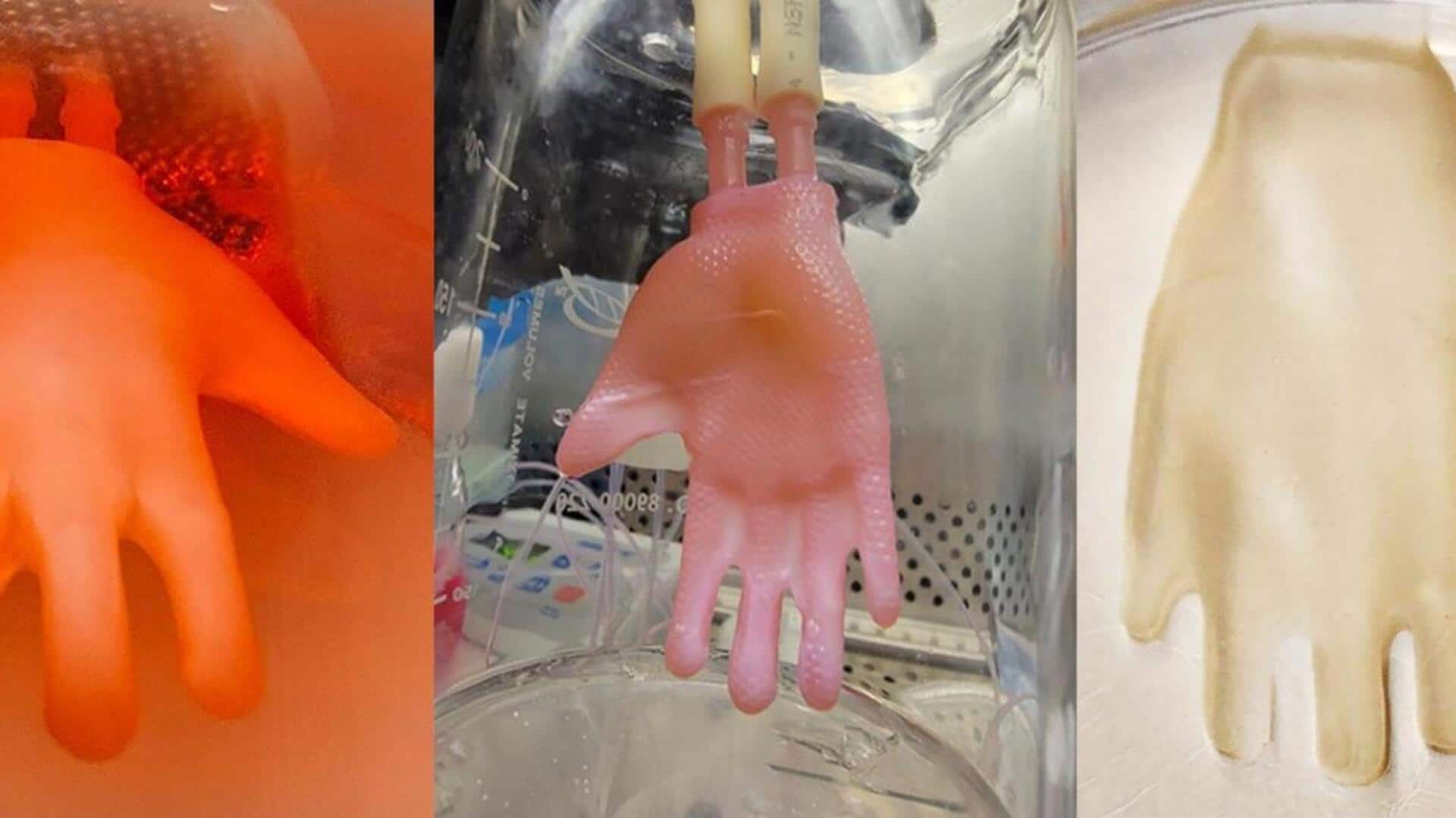
US Army explores 3D skin printing to treat battlefield injuries
What's the story
The US Army is pioneering a transformative approach to battlefield medicine through the development of 3D-printed skin, aiming to enhance treatment for soldiers suffering from severe injuries. The process involves 3D printing human tissues using living cells, proteins, and nutrients as raw materials. The initiative is being led by the US Army Combat Capabilities Development Command Chemical Biological Center (DEVCOM CBC) in partnership with the University of Hawaii System.
Joint efforts
Project under a cooperative research and development agreement
The bioprinting project is being carried out under a cooperative research and development agreement (CRADA) and two initial joint work statements (JWS). DEVCOM CBC and the University of Hawaii will work on multiple life-saving projects, from organ-on-a-chip scientific tools to manufacturing and repair capabilities. These efforts are aimed at supporting the United States Indo-Pacific Command, which is headquartered in Hawaii.
Research focus
Project to improve in vitro organ models
Dr. Jason Barnhill, an associate research professor at the University of Hawaii, will work with Priscilla Lee, a DEVCOM CBC bioengineering researcher. Together they will develop organ models to evaluate different compounds for military medical applications. The project aims to improve existing in vitro organ models using bioprinting technology. This could eventually help treat soldiers suffering from burns, poisonous gas exposure, antibiotic-resistant bacteria and other such threats.
Future implications
Bioprinting could revolutionize organ transplantation
Bioprinting is a revolutionary technology that creates 3D cellular structures using bio-inks to replicate body parts. If successful, it could be a major breakthrough in organ transplantation. The process would involve taking cells from a patient and using them to create an entirely new organ, like a heart. This could open up new possibilities for treating injuries and diseases in the future.